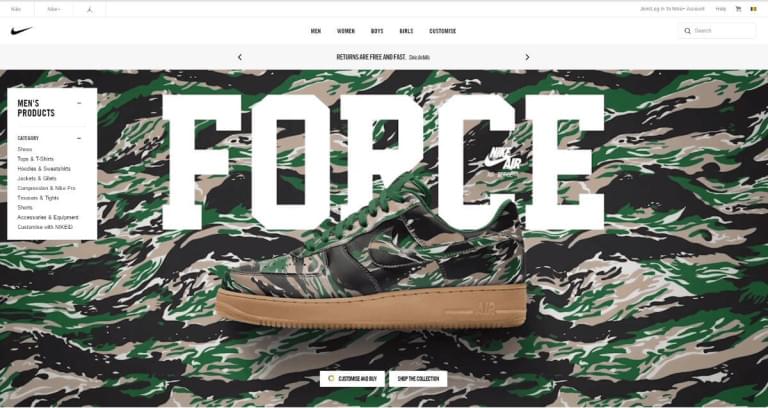
When words and letters are printed, they have to wear the clothing of a typeface. Like our fashion industry, typography has its own trends, famous designers, and also fashion faux pas’s..
Just as wearing crocs and lycra to a business meeting is probably a bad idea, writing your resume in Schoolbell or Comic Sans isn’t likely to set the tone you’re hoping for.
Though we may not be conscious of it, everything we read is filtered through someone else’s visual styling decisions. What’s more, this always impacts on the way we perceive the message. There have been countless studies analyzing the power of typography. From the way people scan through documents to the power of certain fonts to manipulate the way we think, results have pointed to the influence of font choices on cognition.
As a marketer and a typography enthusiast, I’ve always been intrigued by the complex connections between fonts and our decision-making process.
Now, I know I’m not the only one to talk about typography and branding, but I think there are four interesting tips you may not know about.
1. Less Means More
Websites like Medium, Teamweek/a>, and DevTasker(a website I worked on) are like yoga studios from a typography perspective.
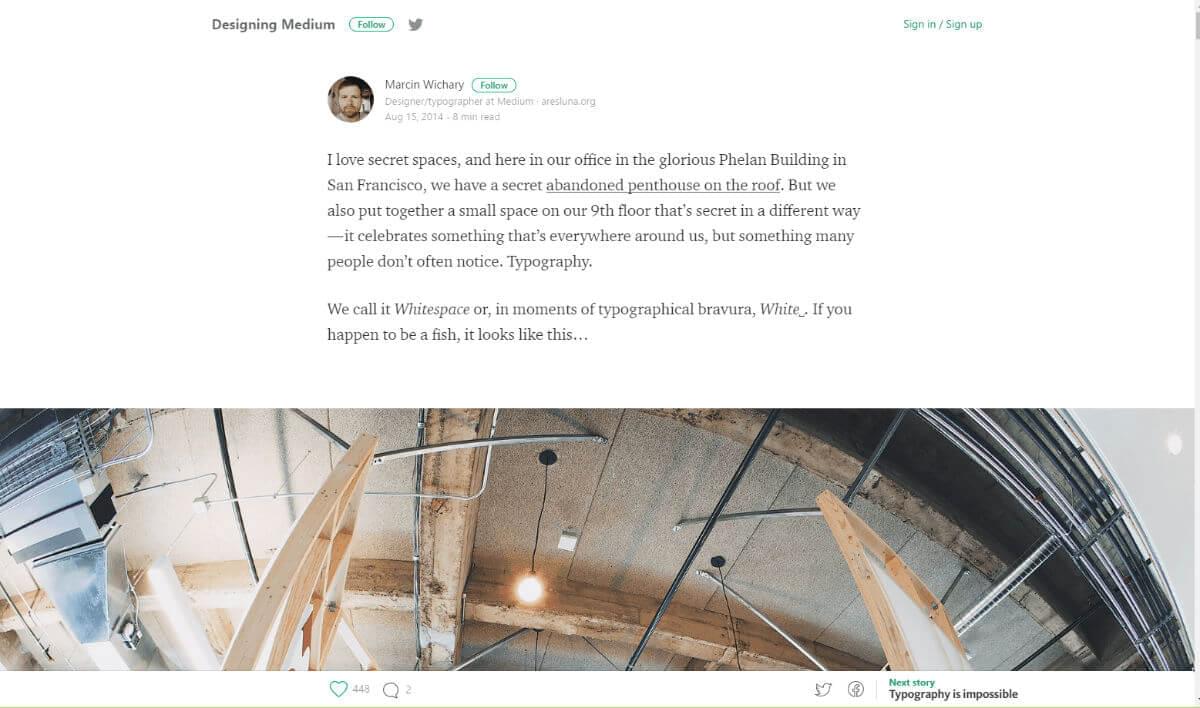
The information is blindly following the KISS design principle (Keep It Simple Stupid) and it makes it extremely easy for the user to grasp what’s going on.
However, avoid being simple in a dull and repetitive way. With the flat design, minimalism, and Helvetica on the rise, designers tend to limit their capabilities to safe design techniques which usually lead to plateauing.
The same way that printing more money isn’t the solution for poverty, adding more information, or text in our situation, isn’t the solution for a lack of clarity in their message. The most valuable asset a brand can provide anybody today is clarity and simplicity.
You see, despite your constant pursuit for creating top-notch content, grabbing your user’s attention is a hassle if your content isn’t aesthetically pleasant. SocialMediaExaminer is one of my favorites examples for content cannibalization. They have millions of people reading their innovative articles and the quality of their content is terrific. However, the information is a bit cluttered.
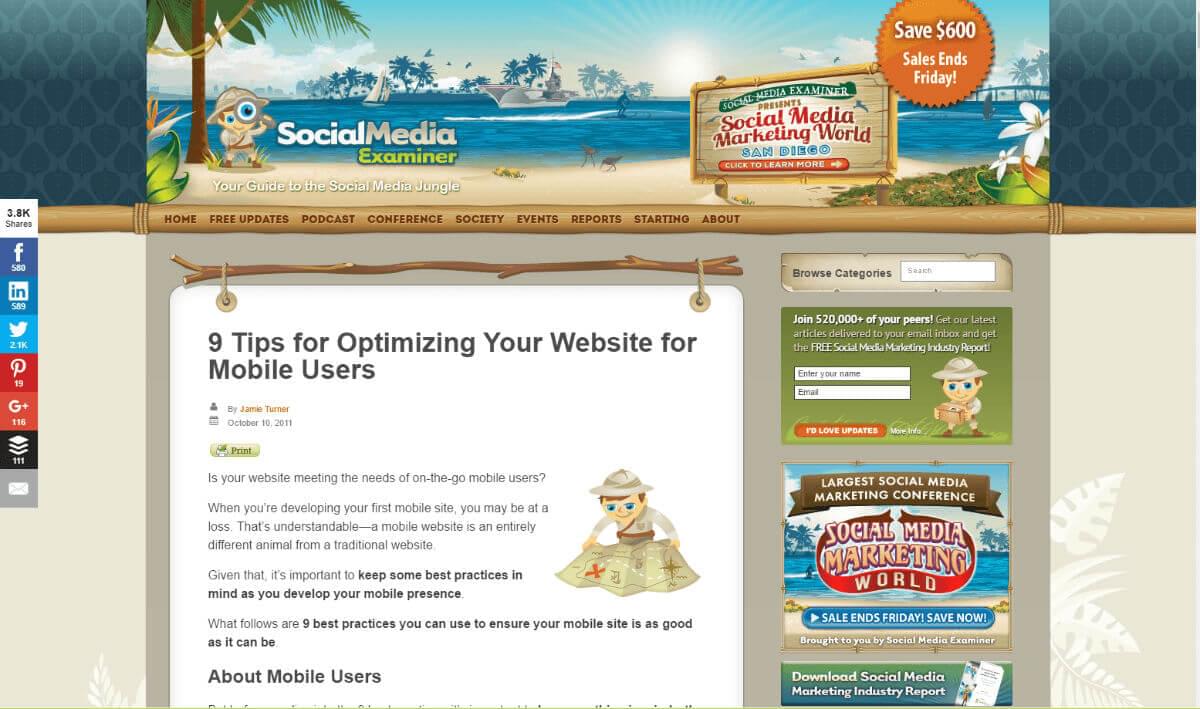
Having content written in different fonts popping out from everywhere leads to ‘content inflation’.
The actionable advice here is: try to say more using less content, and if you find that difficult to do or impossible, well…
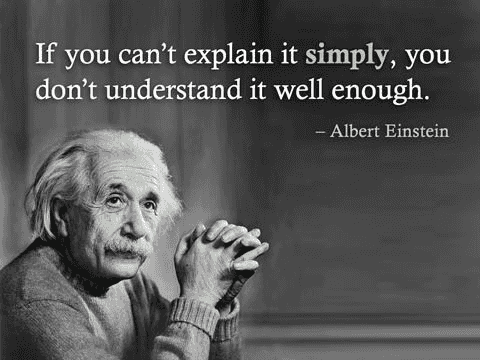
2. Create a Unique Brand Experience
Typography in branding is important because it carries the message of the brand. Very often you can actually understand a brand’s identity just by looking at the typography before you even read the words.
Big brands are looking for a font that can be read globally and expressed everywhere. A brand font should have personality. It should be legible for an eight-year-old as much as for a sixty-year-old. It has to be used in print and digital regardless of the size and format.
Creating an innovative font and developing a unique brand experience is really hard to achieve. It’s not just 26 letters and the English alphabet, it’s about expanding it into a variety of systems and languages.
To be completely honest, creating your own typeface isn’t something that you should pursue if you are a startup or a local brand. The logistics of creating a font are simply horrendous and Samsung can relate.
When they designed the Samsung One font, they wanted to unify the visual branding across multiple platforms and formats. This font’s purpose is to reach and be imprinted in the consumer’s mind as being Samsung’s visual personality.
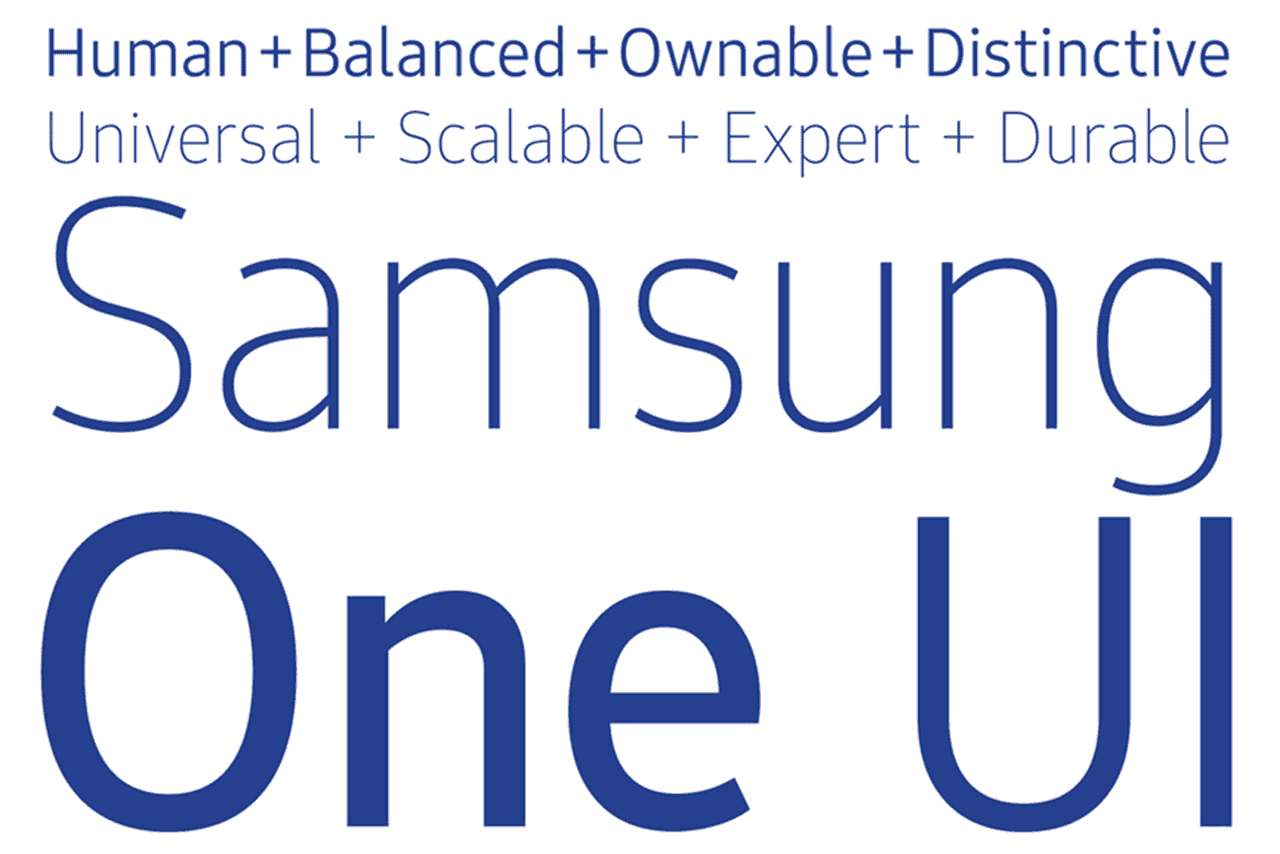
Samsung is not the only company who designed their own font. Google is known for their famous Roboto and Apple has used their own adaptation of ITC Garamond the Apple Garamond which has been used for more than 18 years as their corporate typeface.
Even Donald Trump has his own font and it’s called ’ Tiny Hand’. The font is a satire created by the folks from BuzzFeed and it copies the handwriting of the Donald.
Also, if you want to learn more about branding and typography, I recommend following Designhill. They offer amazing tips on how to create an awesome brand experience, and they are your go-to guys if you are looking for a good graphic design marketplace.
3. Be Practical and Legible
Believe it or not, choosing an ink-friendly font like Garamond in the detriment of Helvetica or Times New Roman can actually help you save a lot of money. If you work in some sort of institution or if you’re printing tons of documents every day, you should consider the fact that ink is more expensive than perfume.
While you might be tempted to think the digital document era has made printing a non-issue, a recent EPA survey determined the average US worker still printed 10,000 pages every year.
Sadly, buying a new printer can often be cheaper than refilling the cartridges, considering the fact that one litre of printer ink is about $5000 – more than the same amount of Chanel #5 perfume.
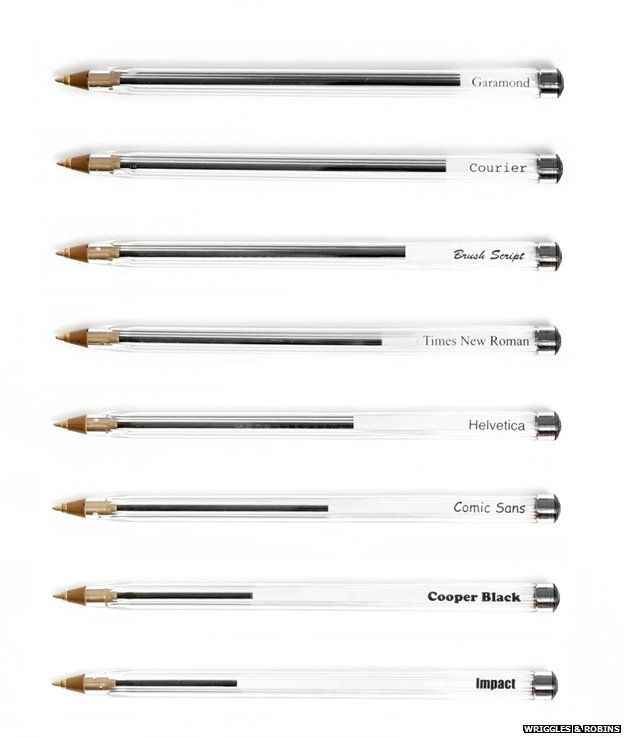
But being legible isn’t just about making the font bigger or about letter spacing – although that might play a part.
Being legible (and I’m quoting Jeremy Loyd on this one) is about :
arranging words and groups of words in a way that allows the reader’s eye to access the content easily and in a way that makes sense. It’s really an art form that is honed over time as successful combinations
are found.’
For example, some practical advice would be to keep fonts at 10 points or greater for optimal reading speed. Arial, Verdana, Georgia and Times New Roman all do equally well as far as reading speed goes.
From a marketing perspective, it should be in your best interest to choose a font that is faster to read and is legible without being ostentatious. The pogo sticking effect and the high bounce rate are real pains for marketers. It’s crucial to grab your potential client’s attention within the first few seconds they see your landing page, ad or visual.
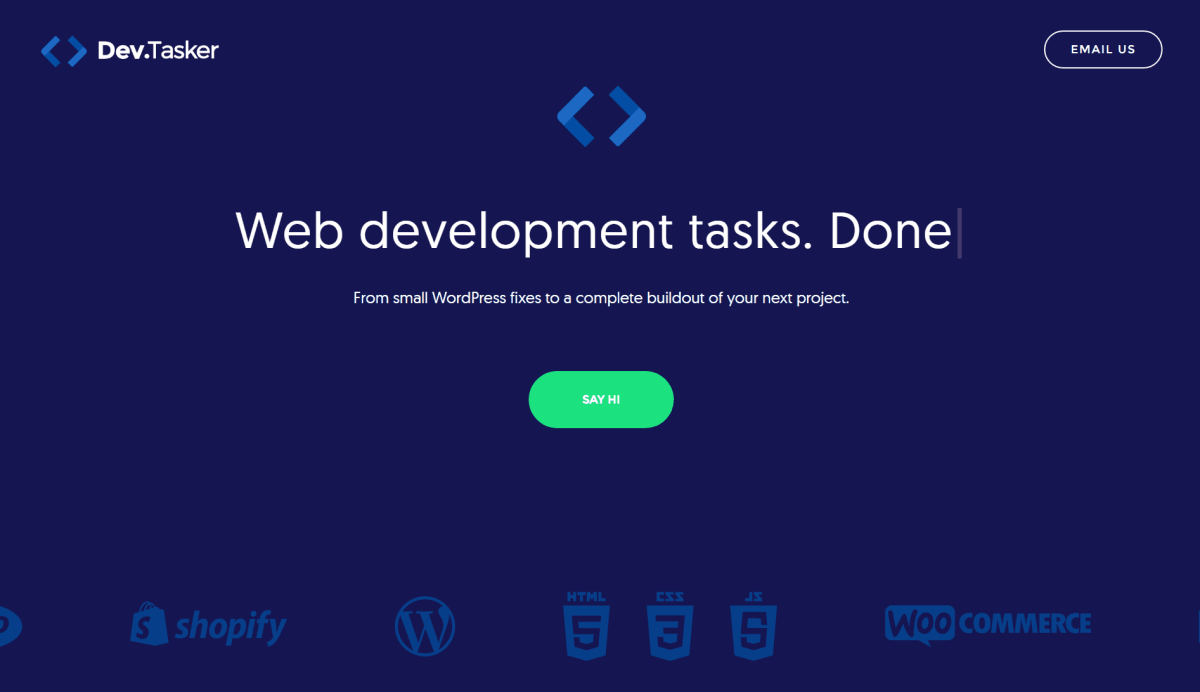
If this example isn’t simple enough, Nike should be a great inspiration for you. They are true connoisseurs of font and message pairing and they leverage short copy with heavy fonts like Futura (which is also in their logo, or at least a variation of it) to make sure that aspects like poor readability or short attention span won’t stand between their message and the audience.
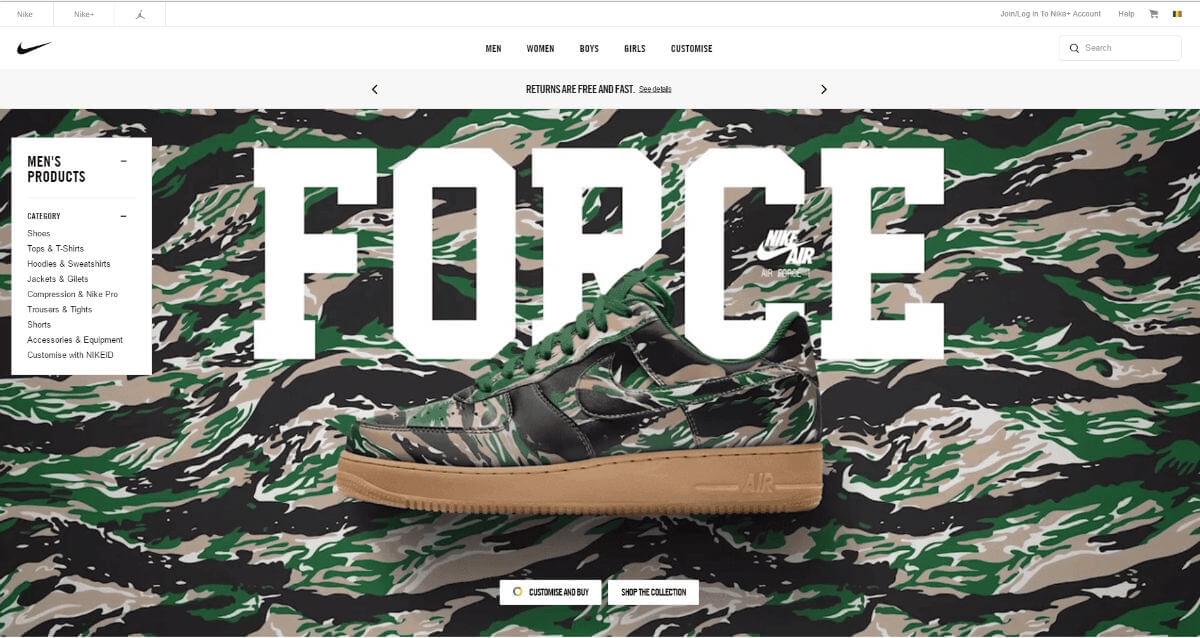
Conclusion
Finding the right typeface isn’t a hard science. There is no magic formula and no secret sauce. Instead, it’s about finding and testing what works for you the best, about finding the font that accurately resembles your brand, copy, and message.
 Andrew Tiburca
Andrew TiburcaAndrei is an avid marketer and content creator. You can connect with him on Twitter(@AndreiTiburca) or read his articles on webdesignledger.com where he's an editor.
